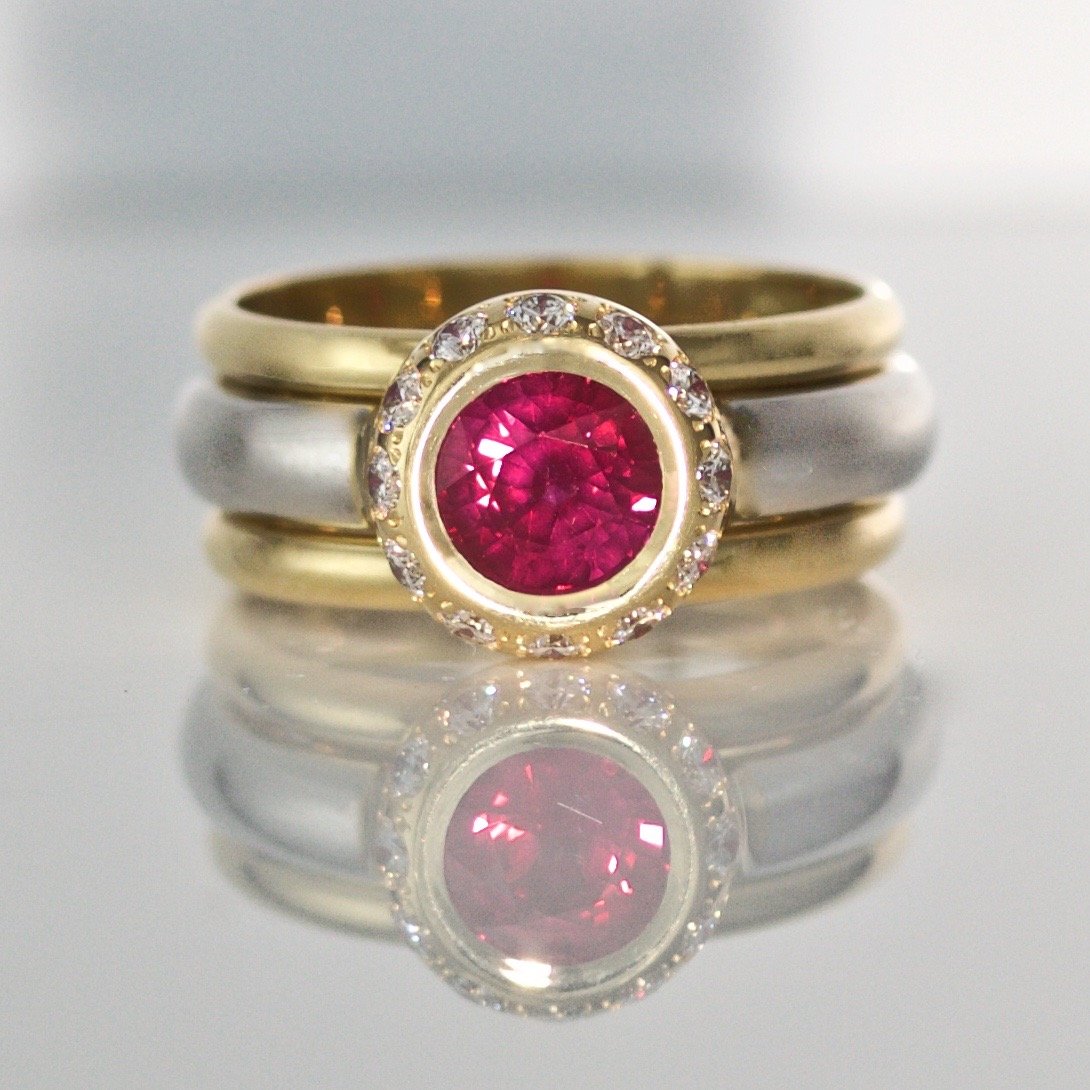Depending on what day you ask, it would be either a fancy colour diamond or Ruby as my favourite gemstone. I love combining them with yellow gold to further enhance their rich opulent colour. Second only to diamond in hardness, it’s a good choice for jewellery that is worn daily. Rubies are the most valuable members of the corundum family. Large gem-quality rubies can be more valuable than comparably sized diamonds and are certainly rarer.
So here we go…. Ruby, a buyer’s guide.
The word ruby comes from ruber, Latin for red.
Ruby is a pink to blood-red coloured gemstone, a variety of the mineral corundum (aluminium oxide). All other colours of gem-quality corundum are called sapphires. The colour of a ruby is due to the element chromium, if a pink corundum doesn’t contain a high percentage chromium, then it’s pink sapphire.
Ruby is one of the traditional cardinal gems, together with amethyst, sapphire, emerald, and diamond. The most expensive coloured gemstone ever sold at auction is a Burmese ruby. The Sunrise Ruby is the world’s most expensive ruby, most expensive coloured gemstone, and most expensive gemstone other than a diamond. In May 2015, it sold at auction in Switzerland to an anonymous buyer for US$30 million Weighed an astonishing 25.59 carats – an extraordinarily rare size for a ruby of its calibre.
The quality of a ruby is determined by its colour, cut, and clarity, which, along with carat weight, affect its value. The brightest and most valuable shade of red called blood-red or pigeon blood, commands a large premium over other rubies of similar quality. After colour follows clarity: similar to diamonds, a clear stone will command a premium, but a ruby without any needle-like rutile inclusions may indicate that the stone has been treated.
All-natural rubies have imperfections in them, including colour impurities and inclusions of rutile needles known as “silk”. Gemologists use these needle inclusions found in natural rubies to distinguish them from synthetics, simulants, or substitutes. Usually, the rough stone is heated before cutting. These days, almost all rubies are treated in some form, with heat treatment being the most common practice. Untreated rubies of high quality command a large premium.
Although Asia has historically been the major producer of ruby gems, there are many other sources including the United States, Australia, and most recently Africa. Origin affects the value of rubies. Stones from Burma (Myanmar) generally command the highest prices. The Republic of Macedonia is the only country in mainland Europe to have naturally occurring rubies. They can be found mainly around the city of Prilep. Macedonian ruby has a unique raspberry colour.
Ruby is the traditional birthstone for July and is usually more pink than garnet, although some rhodolite garnets have a similar pinkish hue to most rubies. When rubbed on the skin, they were also thought to restore youth and vitality. For thousands of years, Ruby was considered the stone of love, energy, passion, power, and a zest for life. Ruby buyers guide
Discover more
https://www.gemsociety.org/article/ruby-jewelry-and-gemstone-information/
<em>https://www.gia.edu/gem-encyclopedia

